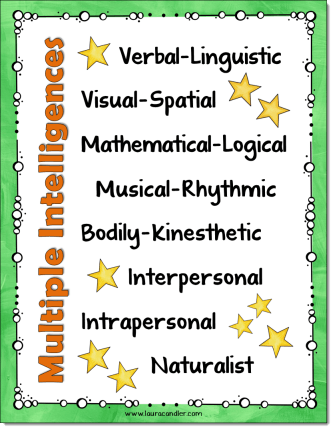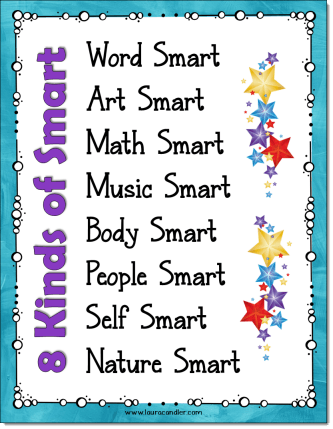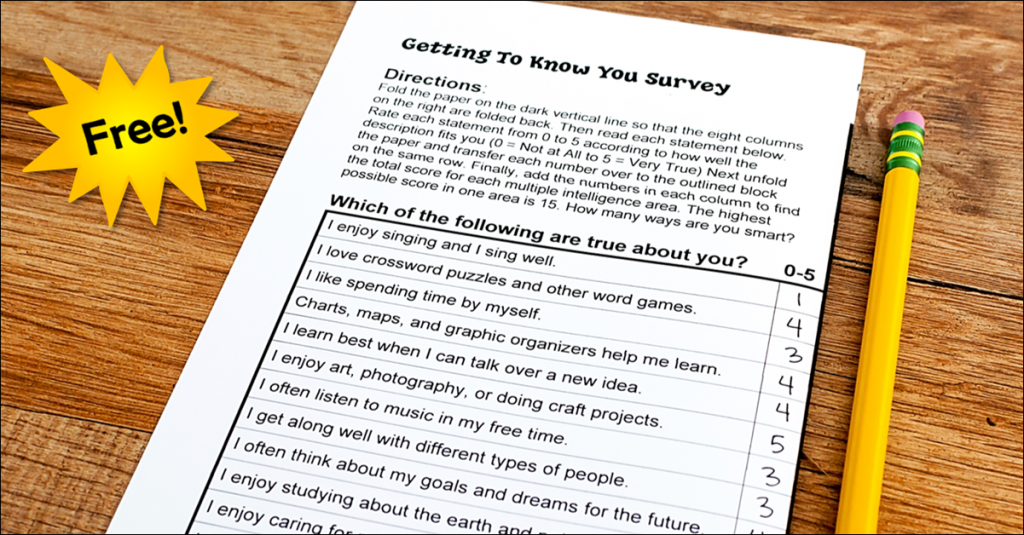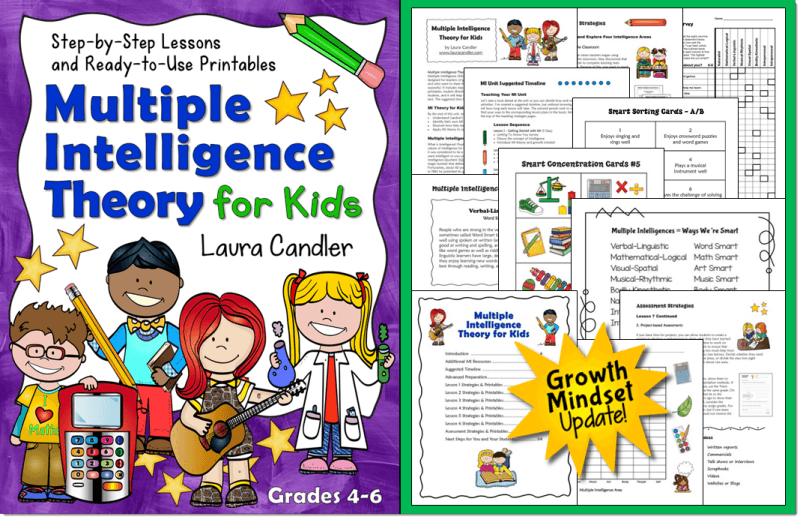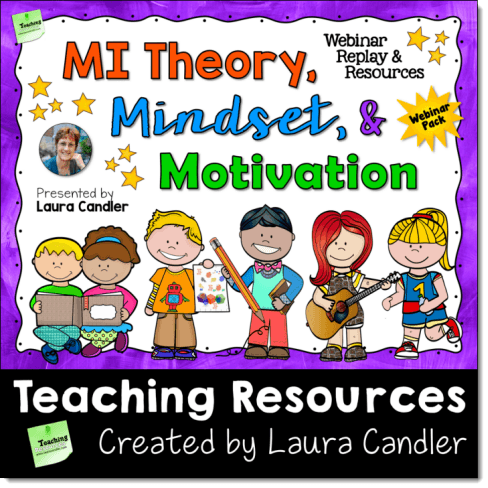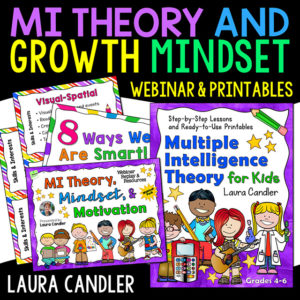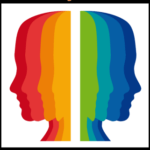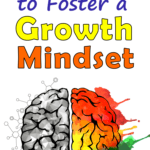Multiple Intelligence Theory and Growth Mindset
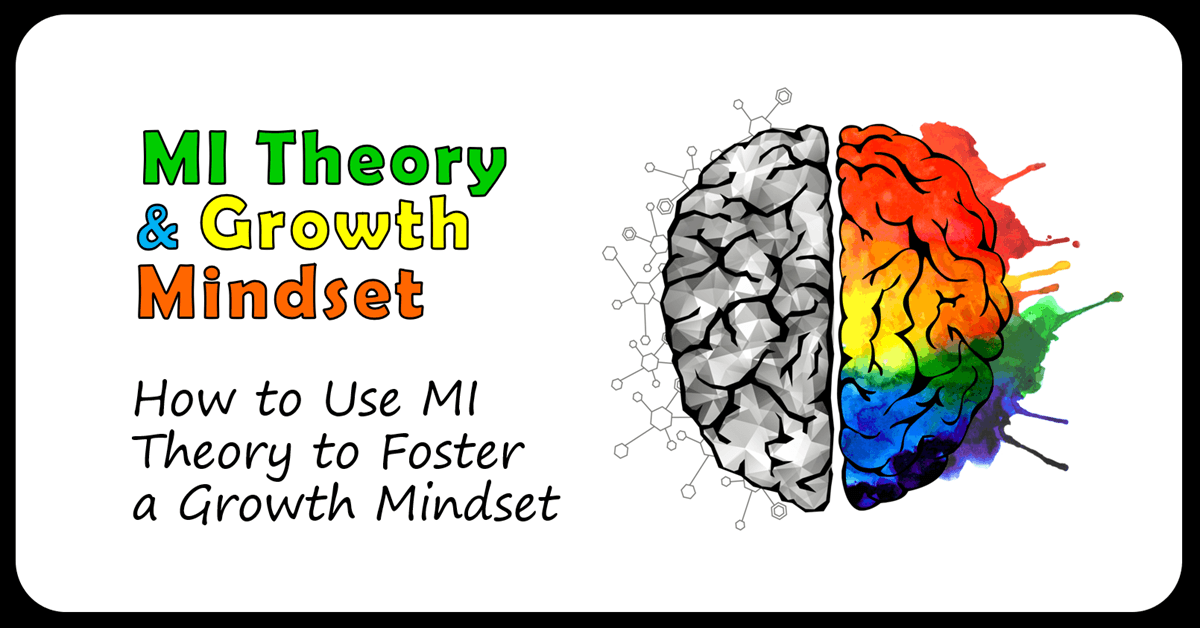
Dr. Howard Gardner first proposed Multiple Intelligence (MI) theory over 40 years ago, suggesting that IQ is not one-dimensional, and that it can’t be described by a single number. Instead, he proposed that there are at least 8 different types of intelligence, including visual-spatial, musical-rhythmic, interpersonal, and others.
While not every educator supports MI theory, I believe that it has great potential as a tool for empowering students to take responsibility for their own learning experiences. Most kids think that someone is either smart or not smart, and that the students who are “smart” are those who excel in math and/or reading. This view makes sense when you think about how schools are designed. The current system favors students who are mathematical-logical or verbal-linguistic. But kids who are artistic, musical, or kinesthetic learners are often out of luck.
Fortunately, educators now recognize that there are many paths to understanding, and students learn best when they are able to engage in activities that take advantage of their strengths. Teachers have always intuitively known that kids learn in different ways, and Gardner’s Multiple Intelligence theory supported their own classroom observations and experiences. Dr. Gardner’s work in this area opened the way for teachers to discuss the implications and search for practical applications in the classroom.
Dr. Gardner used terms like “bodily-kinesthetic” and “mathematical-logical,” but many educators have adopted the kid-friendly terms such as those shown in the image on the right below. If you like the posters below, you can download a free printable PDF of them.
Dr. Gardner later added Existential Intelligence so there are actually nine intelligence areas. However, due to the religious nature of Existential Intelligence, it’s not one that I would include in lessons for elementary students. Feel free to introduce this to your students if you wish.
Free Multiple Intelligences Survey for Kids
I created this kid-friendly Multiple Intelligence Survey to help my 5th graders discover how they learn best, and you’re welcome to use it with your students, too. But before you do, please watch the video below to learn how to use the survey appropriately. In the video, I explained how to administer and score the survey, and I also shared some tips and guidelines for using it to foster a growth mindset. This survey is most appropriate for upper elementary or middle school students. If you’d like to use it with your students, click here to request a free copy of this MI Survey for Kids.
MI Survey and Growth Mindset Video
Multiple Intelligence Theory Versus Growth Mindset
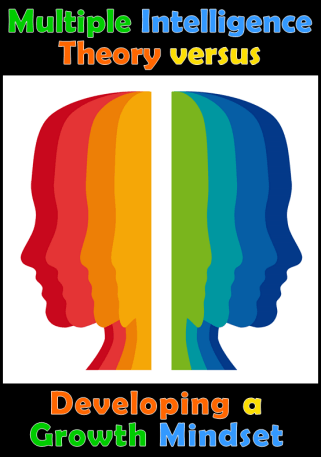 If you’re familiar with Dr. Carol Dweck’s research regarding fixed versus growth mindset, you might be wondering whether her findings are compatible with MI theory. To provide a bit of context, Dr. Dweck found that praising kids for being “smart” is actually detrimental to their self-esteem and hinders them from succeeding in school. When kids are praised for being smart, they learn to avoid tasks that include a risk of failure, because failing must mean they aren’t smart.
If you’re familiar with Dr. Carol Dweck’s research regarding fixed versus growth mindset, you might be wondering whether her findings are compatible with MI theory. To provide a bit of context, Dr. Dweck found that praising kids for being “smart” is actually detrimental to their self-esteem and hinders them from succeeding in school. When kids are praised for being smart, they learn to avoid tasks that include a risk of failure, because failing must mean they aren’t smart.
The good news is that we can positively impact our students’ mindsets by changing the way we praise them. Praising students for choosing challenging tasks and recognizing them for working hard to master difficult skills fosters a “growth” mindset. With enough encouragement and support, kids will begin to believe in themselves and succeed in situations where they would have previously given up.
Partly due to concerns about praising kids for being smart, some educators believe that MI theory is no longer relevant. However, I disagree. If you think about it, the two theories actually support each other quite well. MI theory can help students understand how they learn best, and this knowledge can foster a growth mindset when they are struggling to solve a problem or facing a difficult task.
However, it’s important to have a full understanding of both concepts in order to implement them effectively in the classroom. Carol Dweck’s work reminds us of the need for caution when using the word “smart” as it relates to MI theory. We should never treat “smartness” as a fixed quality, or praise students for being “smart,” as if being smart is in itself a worthy goal. Any praise we offer students should support a growth mindset.
Growth mindset research also comes into play when interpreting the results of MI surveys. While a survey may indicate that we have strengths in some areas more than others, those results may not be a true reflection of our abilities. In fact, any “strengths” may be the result of previous life experiences, and we are likely to develop strengths in other areas in the coming years as we try new things. Scores in each of the eight areas should be viewed as flexible, providing a snapshot of how we learn best right now. The way we can become smarter in ALL areas is to try new experiences and be willing to face challenges, even if that means we might not be successful right away.
To put this into perspective, imagine that one of your students, Cindy, tells you she’s not smart in math. She’s always felt this way and has just accepted it as a “weakness.” However, after learning about MI theory and growth mindset, Cindy realizes that she’s not doomed to have poor math skills forever. After taking an MI survey, Cindy discovers that she’s highly Visual-Spatial and has strengths as a Bodily Kinesthetic learner. The next time she feels frustrated trying to solve a math problem, she decides to draw a picture to help her visualize the problem and its solution. To check the answer, she recreates the problem using snap cubes because this hands-on approach gives her confidence in her solution.
Ultimately, both multiple intelligence theory and the research on growth mindset can empower students to take ownership of their learning!
By the way, if you’re encouraging your students to develop a growth mindset, you might object to teaching them the kid-friendly MI terms because all of those terms include the word “smart.” Instead, teach your students the terms that Dr. Gardner used to describe these intelligence areas. They may enjoy the challenge of learning those big words!
How to Teach Kids About MI Theory & Growth Mindset
Multiple Intelligence Theory for Kids includes lessons, printables, and other resources to help you teach your students about MI theory in an engaging way using cooperative learning strategies.
MI Theory, Mindset, and Motivation is a 2-part professional development webinar that I developed to explain how to foster a lifelong love of learning by integrating MI theory with growth mindset.
More MI Theory and Growth Mindset Resources from Laura Candler
Exploring the Rain Forest: Multiple Intelligences and Cooperative Learning Activities
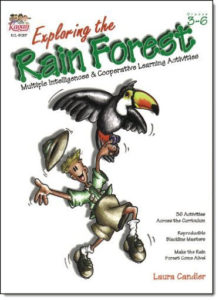 Exploring the Rain Forest: Multiple Intelligences and Cooperative Learning Activities is one of the books I wrote for Kagan Publishing before I started creating digital lessons and resources for teachers.
Exploring the Rain Forest: Multiple Intelligences and Cooperative Learning Activities is one of the books I wrote for Kagan Publishing before I started creating digital lessons and resources for teachers.
I loved teaching about the rain forest, and it was easy to integrate multiple intelligences into my lessons. With the lessons in this book, you can take your students on a safari through the tropical rain forest. Use their limitless curiosity and enthusiasm about this theme as a springboard into every subject! This book includes 36 ready-to-do cooperative, multiple intelligences activities to explore the rain forest. Working in teams and with classmates, your students will create and sing tropical tunes, write letters to conservation agencies, map the rain forests of the world, learn about the rain forest products, medical mysteries, amazing animals, jungle secrets, layers of life and much more. Explore the rain forest with your class to make learning an unforgettable adventure.
You can find Exploring the Rain Forest on Amazon.

